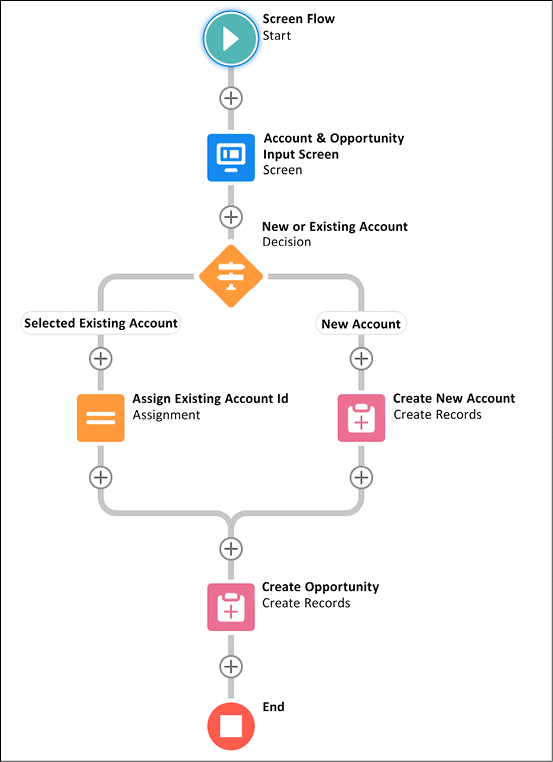What is a flow?
Flows are automations that can be built without having to write code. They consist of series of steps, with branching decision logic, where you can define when and what you want a system to do. Below, you can see an example of a flow that we will build later in this chapter:

Figure 16.1: Example of a flow
As you can see from Figure 16.1, this flow contains steps for an input screen, a decision that splits down two pathways, and an action that is performed before completing. We can also see that the flow consists of various elements, such as Decision, Assignment, and Create Records. These are categories from which we pick the steps a flow will follow – see more about this in Understanding Flow Builder elements.
There are several different flow types that can be used for different requirements. Salesforce will ask you to pick a flow type before you begin building a flow, so let’s go through these now.































































